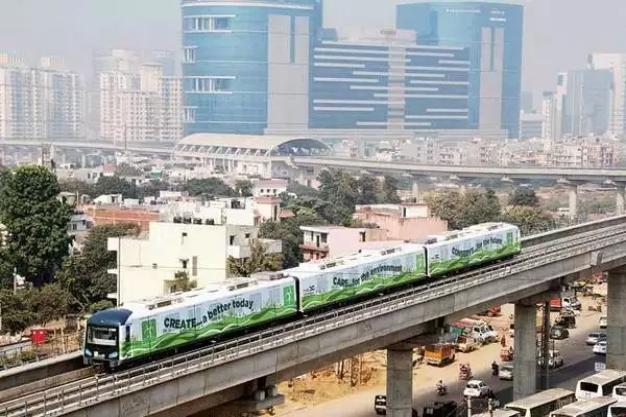
Gurgaon has expanded its roads and automobile infrastructure including expressways. However, lack of proper planning has led to traffic congestion, longer travel times, and increased road fatalities. Limited progress in terms of sustainable mobility has impacted not only transportation modes and choices but also the social and environmental aspects of the city.
Gurgaon’s over reliance on a “car-centric” approach, evidenced by a staggering vehicle ownership rate of 323 cars per 1,000 people, has marginalized public transportation and non-motorized modes like walking, cycling, and cycle rickshaws.
The Gurgaon Metropolitan Development Authority (GMDA) has devised a Comprehensive Mobility Management Plan (CMMP) for 2020. This plan, informed by extensive traffic and transport surveys conducted by the School of Planning and Architecture in New Delhi, lays out long and short-term strategies to improve mobility in Gurgaon from 2021 to 2041. Notably, the CMMP emphasizes the urgent need to invest in non-motorized infrastructure and enhance mass transit systems for improved regional connectivity.
According to the CMMP, Gurgaon boasts a vast road network spanning approximately 953 kilometers, comprising expressways, arterial routes, and local streets. However, the majority of inter-city trips (67%) occur between Gurgaon and Delhi, underscoring the need for additional road connections to alleviate congestion, particularly during peak hours. Moreover, the city faces challenges such as inadequate footpaths, with only 28% of roads equipped with them, and encroachments obstructing their use. A staggering 74% of these sidewalks are rendered unusable due to poor design, encroachments, and a lack of maintenance, frequently obstructed by parked vehicles and street vendors.
As per CMPP, 33% of all trips in Gurgaon are made on foot, highlighting the city’s potential for pedestrian-friendly infrastructure. Moreover, road crossing conditions at intersections are often substandard. To rectify this, the CMMP recommends the establishment of 1,083 kilometers of footpaths, lining 800 kilometers of road networks, along with the implementation of 12 pedestrian crossing facilities.
Additionally, CMPP reveals that 51% of Gurgaon’s road network maintains speeds below 30 kmph, while 11% exceeds 60 kmph. An estimated 4,47,519 passenger car units (PCUs) enter the city, with 75% destined for internal destinations and the remaining 25% passing through the city. The absence of bypass routes diverts inter-city traffic through the city center, leading to congestion for local commuters. High-speed movement alone cannot solve congestion issues. Instead, it is crucial to maintain consistent speeds with regular signals at intersections. This approach helps distribute the density of vehicles and streamline the traffic flow.
Encouraging initiatives, such as the transformation of Sadar Bazar into a pedestrian-friendly zone by the Municipal Corporation of Gurugram (MCG), signify steps toward creating a more walkable and accessible cityscape.Cyclists also encounter obstacles, with existing cycling tracks often repurposed or encroached upon, leading to a rise in accidents. The CMMP proposes the creation of a city-wide cycle track spanning 797 kilometers and a public bike-sharing system featuring 10,000 cycles to improve last-mile connectivity. To promote walking and cycling, Gurgaon must prioritize infrastructure development, including designated tracks, signage, and crossings. While some progress has been made by NGOs like the Raahgiri Foundation and WRI India, more concerted efforts are needed to elevate cycling to a viable daily travel mode.
In terms of public transport, Gurgaon falls short of the service level benchmark, with limited city bus services and incomplete coverage. The existing bus network, operated by Haryana Roadways and the Gurugram Metropolitan City Bus Ltd (GMCBL), suffers from underutilization due to inadequate infrastructure and low frequency. The Gurgaon Metro and Rapid Metro primarily serve New Gurgaon, with plans for expansion to Old Gurgaon underway. However, challenges persist, including funding issues and operational constraints.
Experts advocate for a shift towards a dense bus network integrated with intermediate public transport systems like auto-rickshaws and e-rickshaws, along with walking and cycling networks, to provide efficient and sustainable transportation options for residents.
Addressing informal public transport, such as cabs and auto-rickshaws, and implementing organized parking systems are also critical steps to alleviate congestion and improve mobility in Gurgaon.
Embracing the CMMP’s vision of “moving people, not vehicles,” and establishing a dedicated Non-Motorized Transport (NMT) Cell are essential for Gurgaon to navigate towards a sustainable future. This collective effort, supported by urban planners and designers, is crucial to overcoming the city’s mobility challenges.
